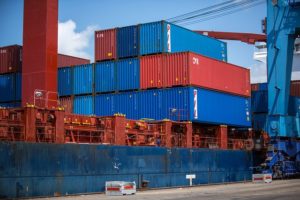 Finding the right piece of equipment is only half of a successful machinery purchase. In the modern age of online marketplaces, buyers and sellers are often located in the different parts of the world.
Finding the right piece of equipment is only half of a successful machinery purchase. In the modern age of online marketplaces, buyers and sellers are often located in the different parts of the world.
If you briefly check used machinery offers on our website, you can see the geography is very broad. Machines are spread all around the continents: Europe, Asia, Africa and both Americas. So shipping machinery overseas can become a tough call. Or is that really the case?
Transporting the machine from a seller’s warehouse to your facility is a necessary expense and a crucial part of the deal which needs to be taken into consideration. Especially, shipment of heavy machinery is not to be treated lightly.
Many buyers feel apprehensive at this stage and try to avoid long distance shipment by all means. Our advice, however, is: don’t let the location of the machine determine your choice of the right machine for your needs. The shipment cost rarely exceeds 10% of the equipment price.
Being aware of various shipping options prior to closing the deal puts you in a comfortable position and allows to plan transportation in advance.
Ways of shipping machinery overseas
When you’re purchasing equipment which weighs hundreds or even thousands of pounds, following shipping options are in place.
Roll On Roll Off
Roll on Roll off (or RO-RO in short) is one of the most common methods of shipping heavy industrial equipment. This type of transportation is only suitable for self-propelled machines that possess wheels or treads and can be rolled on and off the ship.
RO-RO overseas shipping method is one of the most reliable as the machine is secured to the ship’s deck with braces and straps. The only downside of RO-RO shipping is how time-consuming it is. The lead time can be quite long due to the extreme weight of the machinery. Nevertheless, RO-RO is one of the most popular
Open Flat-Rack
In case RO-RO shipping is not suitable for the piece of equipment you’ve just purchased, open flat-rack shipping is one of the alternatives. An open flat-rack method is used when the machine can’t be rolled on and off the ship. Representing an open container from 20 up to 40 ft, flat-rack can support the weight of equipment up to 67,000 pounds.
Those industrial machines with dimensions over 10 ft in width are usually shipped on a flat-rack. Inside the rack, the machine is safely secured to the bottom with cords. In some cases, however, disassembly of the machine will be necessary to fit into the container. The seller can perform the de-installation upon prior agreement.
Standard Container
The third shipping option is to use a standard shipping container. Container shipment is considered to be the most common method of shipping machinery overseas. While similar to open flat-rack shipping in terms of dimensions and weight limits, the container is completely enclosed.
Take into consideration, standard container shipping will require the machine to be at least partly disassembled. Containers come in standard and oversize types, more than one container might be needed to transport a purchased piece of equipment. If your machine has an unusual height, a container with an open top might be provided by a shipping company.
How to Select Shipping Company
The best way to secure a reliable shipping and logistics company is to shortlist a few providers and contact them in order to get price quotations for your shipment. The shipper will need to know the place of loading and the final destination, as well as the dimensions of your cargo, volume, and weight. Based on the received quotations, you might be able to select the logistics company offering the most favorable shipping conditions.
Professional shipping service provider should also be able to advise you on the most suitable shipping method for your type of cargo. Based on the communication with the logistics company, you will also be able to determine whether the machine you’re buying will need to be disassembled in order to fit into the shipping container or open flat-rack.
Customs is the next big topic when it comes to shipping machinery overseas. Be certain to discuss customs services with your shipping provider up front. Depending on the logistics company, customs services may be included in the shipping cost.
Otherwise, you might need to search for an independent company providing customs services in case your shipper can not help you with that. You might find the link to the list of licensed international shippers helpful when selecting the right logistics company.
Thank you for reading our articles, stay informed about the industrial world and Exapro by following us on Exapro Hub, Facebook, Twitter and LinkedIn.




One thought on “Shipping machinery overseas”